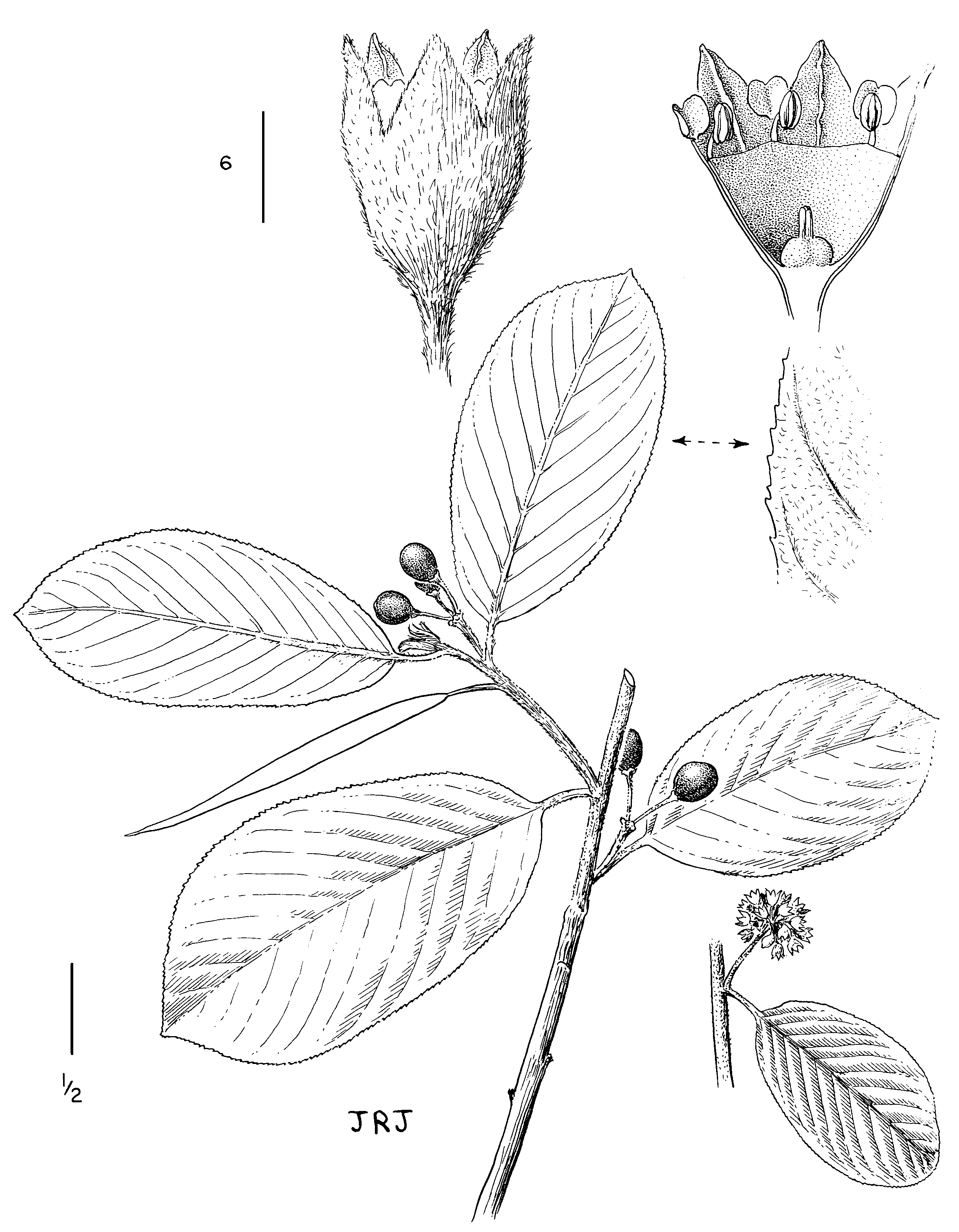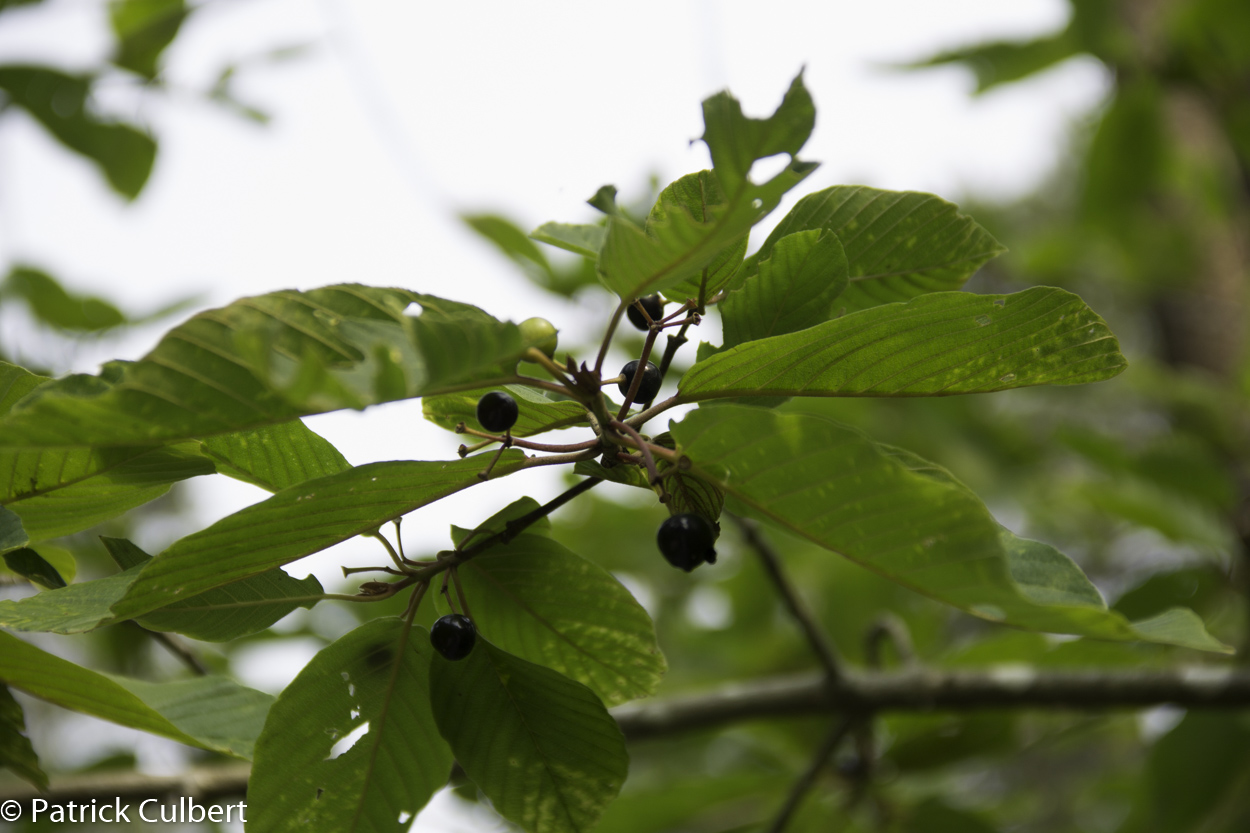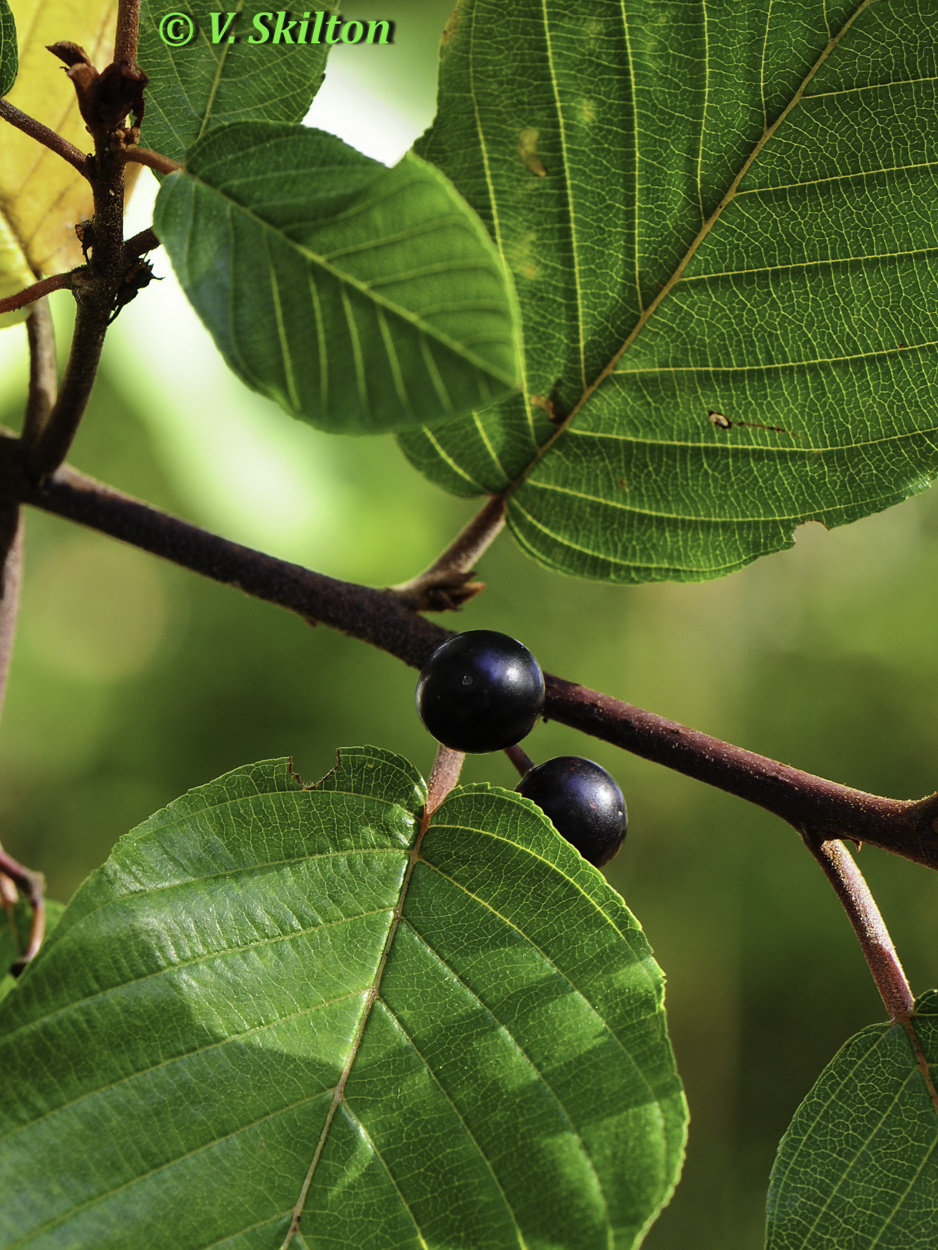Rhamnus purshiana – cascara
Common Name
cascara
Alternate Common Names
- cascara buckthorn
Family
Rhamnaceae
Scientific Name
Rhamnus purshiana
Alternate Scientific Name
- Frangula purshiana
Soil Moisture Regime (SMR)
- Wet (W)
Soil Nutrient Regime (SNR)
- Rich (R)
Video link
Hitchcock, C. Leo, and Arthur Cronquist. Flora of the Pacific Northwest: An Illustrated Manual © 1973. Reprinted with permission of the University of Washington Press.
General / Habitat
- Tall shrub or small tree
- Prefers shady sites in mixed forest
- Low to middle elevations
Key Identifying Characteristics
- Form: Up to 10 m tall with silvery-grey bark
- Leaves: Alternate (though appearing opposite on young growth), deciduous, egg-shaped, glossy, finely toothed, strongly veined in furrows leading to a washboard-like texture
- Flowers: greenish-yellow, small, borne in umbrella-shaped clusters of 8-50 flowers in leaf axils
- Fruit: blue-black to purplish-black berries
- Other: intensely bitter bark, with a flavour that can remain in the mouth for hours
- Other: naked buds (no bud scales)
Interesting Characteristics
- The bark is a powerful laxative and until 2002 (when it was banned by the FDA) was the principal ingredient in many over-the-counter laxative products.
- Natural populations severely overharvested due to attempts to collect the lucrative bark.
Co-occurring Species
- Commonly grows alongside red alder, maples, and red-osier dogwood
External References
Sources
Douglas, G.W. et al (Editors). 1998-2002. Illustrated Flora of British Columbia, Volumes 1 to 8. B.C. Min. Environ., Lands and Parks, and B.C. Min. For., Victoria, B.C.
Pojar, J. and A. MacKinnon. 2014. Plants of Coastal British Columbia Including Washington, Oregon & Alaska. B.C. Ministry of Forestry and Lone Pine Publishing. Vancouver, B.C.





